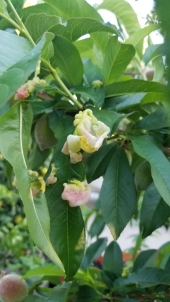


The Humble Soapnut - A Guide to the Laundry Detergent that Grows on Trees ebook by Kathryn Ossing
will be released to subscribers in:
soon!







“We can complain because rose bushes have thorns, or rejoice because thorn bushes have roses.” — Abraham Lincoln
 1
1




 4
4




When you reach your lowest point, you are open to the greatest change.
-Avatar Aang
 3
3




 3
3




s. lowe wrote:Sounds like peach seeds might be a great option for us in the northwest
Also I recalled that silica can be used as a foliar to aid in fungal resistance and I've seen pretty crazy general immune improvement from using sea-crop fairly sporadically (I'd imagine other sea mineral concentrates would be similar, I'm just partial to sea crop and it's kinda local coming from Olympia I think )
When you reach your lowest point, you are open to the greatest change.
-Avatar Aang
 3
3








 2
2




“We can complain because rose bushes have thorns, or rejoice because thorn bushes have roses.” — Abraham Lincoln
 1
1




 1
1








“We can complain because rose bushes have thorns, or rejoice because thorn bushes have roses.” — Abraham Lincoln





|
the force is strong in this tiny ad
The new permaculture playing cards kickstarter is now live!
https://www.kickstarter.com/projects/paulwheaton/garden-cards
|





